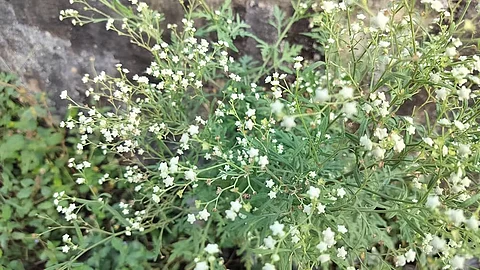
- Home
- Live Blog
- Breaking News
- Top Headlines
- Cities
- NE News
- Sentinel Media
- Sports
- Education
- Jobs

A CORRESPONDENT
BOKAKHAT: In Kamargaon, under Bokakhat subdivision, the rapid and alarming spread of the invasive and toxic Parthenium plant has raised serious public health concerns. The poisonous weed has proliferated across various areas of greater Kamargaon, including Tamulipathar, Boruagao, Panidihingia, Bachapathar, Parghat, and the Khumtai revenue circle’s Badulipar region.
This unknown enemy of nature, the dangerous parthenium plant, has now become a silent threat looming over Golaghat district. Along with several other parts of Assam, it has recently taken over the divider sections and both sides of the National Highway 37 between Badulipar and Rongamati to Numaligarh. Its explosive growth poses a serious danger to human life.
Unlike regular roadside plants, these white-flowered Parthenium bushes are not ordinary weeds. Globally recognized as highly toxic and invasive, Parthenium poses grave risks not just to humans but also to animals. Botanical science has classified Parthenium as poisonous, and direct contact with the plant may lead to health issues such as fever, cold, cough, asthma, allergies, rashes, itching, and severe respiratory diseases.
Parthenium is so toxic that cattle or goats walking through or grazing on these plants can fall ill and may even die as a result. Notably, residents of the greater Kamargaon area have reported an increase in allergy cases, skin rashes, and itching, believed to be caused by the spread of parthenium. Consequently, conscious citizens from Komargaon raised demands to the National Highway Authority to take immediate action to eradicate these toxic Parthenium plants from the region.
Also Read: Assam: Toxic Parthenium weed poses serious threat in Tezpur
Also Watch: